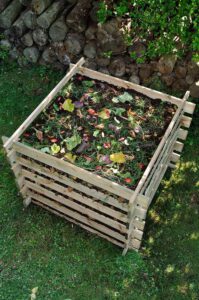Landscaping is a great way to make your backyard look more beautiful and inviting. It can also help you to save time, money, and energy. Often, you can find landscaping hacks that will make your landscape easier to maintain. For instance, you might want to try planting flowers or vegetables in pots that can be used to enhance the landscape. You can also use plants that bloom all year.

The right combination of nutrients, sex, and a bit of patience will get your flowerbed off on the right foot for many years to come. You don’t have to shell out the big bucks to do it right the first time around, and a few smart moves in the process will pay off handsomely in the long run. Having a well-manicured garden is the stuff of legends, and with a little effort, you will be the envy of the neighborhood. Having said that, your garden deserves a little more attention than the rest of your family. If you’re looking for a little help with your gardening responsibilities, you can count on me to deliver a fair shake. Fortunately, I’m a one-woman show and am well-versed in all things green.
Perennial plants are the backbone of any garden. They require more care than annuals, but they are long-lasting and come back each year for many years. So if you’re thinking about creating a garden that will stand the test of time, you should consider these landscaping hacks.
One of the most common perennials in the States is hosta. Hostas grow two feet tall and wide and feature leaves that range from green to gold. These plants also grow bulbs in the spring and fall.
Another classic perennial is purple coneflower. Purple coneflowers are easy to maintain and can be left to attract birds. The coneflowers can be deadheaded in the late summer to keep the flowers blooming. This will encourage new ones to appear.
In colder climates, lantana is treated as an annual. Plants are raised in heated greenhouses and sold to the public when they flower. Their flowers are attractive to butterflies and hummingbirds.
Blue false indigo is another perennial plant that grows well in full sun and in poor soil. It can bloom as early as mid-May through June. Depending on the variety, other species of false indigo may also bloom in other colors.
You can find many more perennials at your local garden center. Be sure to check your local plant tags for specific information.
If you’re looking for a perennial that’s fast-growing, try chrysanthemums. The plants have bright blooms and are also resistant to deer.
Many of these plants are also available in hanging baskets. However, they cost more than bedding plants. Instead, try planting a combination of flowering bulbs for a low-maintenance alternative.
Some people like to keep a gardening journal to record their bloom times. You can also save seeds from common vegetables for the next year.
To keep your landscape looking great, you’ll need to pay attention to detail. For example, removing perennial weeds is a tough task. But if you take the time to do it, your plants will be healthier and last longer. Besides, if you want to create a magazine-worthy garden, you’ll need to invest some time and effort.
Among the throngs, you have to be selective about the plants you entrust with your prized possessions. With that in mind, what are you going to grow in the first place? The answer is a well-tended, well-managed garden. In particular, you’ll want to pay attention to the smaller offshoots, especially the ones that aren’t. Whether you’re looking for more productive ways to grow your crops or trying to find a more rewarding mate, you’ll want to put in some effort if you want to reap the rewards. To do this, you’ll need to get outside and enjoy the sun. Besides, you can’t help but get in the mood for a well-deserved spritzer! Luckily, this is the best time of year to do it.
If you’ve ever wondered how to plant flower bulbs, you’re in luck. There are a few simple steps to follow. You can start by preparing the soil. This includes adding compost and raking the area.
After you’ve cleared the soil of weeds, you can plant the bulbs. Be sure to place them in a spot that will receive six hours of sunlight each day. They’ll need regular watering to grow.